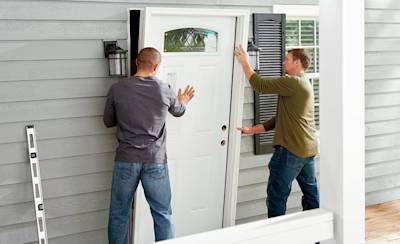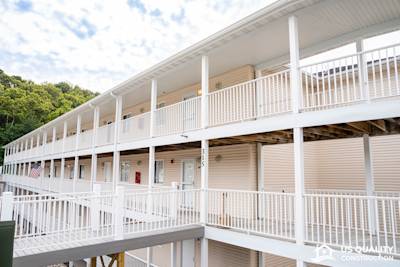Concrete as a building material has been around for centuries, keeping structures sturdy and long-standing. Coming with a great deal of durability, decor versatility, and availability, undertaking a project about concrete installation might look like a daunting task. But fret not, because we'll be walking you through the entire process.
Understanding Concrete
One of the first things you need to understand about concrete installation is what concrete is. It's a combination of cement, water, and an aggregate like gravel or crushed limestone. Once the ingredients are mixed, the concrete is poured into a mold where it hardens and gains strength over time. Concrete is an essential material used in various projects like concrete driveway installation or even concrete slab installation.
The Role of Concrete in Construction
From roads, bridges, homes to sky-high buildings, concrete is universally known for its strength and durability. No wonder it's the leading choice in residential and commercial construction projects.
Prepping for Concrete Installation
Before you embark on concrete floor installation or any other concrete work, there are various aspects you need to consider to guarantee the project's success.
Site Preparation
Before concrete is installed, the area must be prepped. This includes clearing away any obstacles or debris and making sure the ground is leveled. Depending on your concrete installation project, it may also involve setting up wooden forms to hold the concrete in place as it hardens.
Choosing the Right Type of Concrete
The type of concrete used depends on its final use. For instance, the concrete used for concrete patio installation might be different from what's used in building a high-rise building.
The Actual Concrete Installation Process
Now that you know the basics and have everything ready, it's time for the real work.
Mixing the Concrete
You can either mix the concrete on-site, or it can be pre-mixed and delivered to your location. The mixture should be a thick, cookie dough-like consistency.
Pouring the Concrete
The next step in concrete installation is the actual pouring of the concrete into the forms. While doing this, you have to ensure that it fills all spaces to avoid hollow pockets, which affects the structure's integrity.
Leveling the Concrete
Post-pouring, you need to level the concrete surface using a tool known as a screed. This ensures a smooth and flat finished surface.
Curing the Concrete
Curing is a key process where the concrete is allowed to harden and gain strength. This process can take anywhere from a few days to weeks.
Finishing the Concrete Installation
Removing the Forms
When the curing process is over, the wooden forms can be removed.
Aesthetics
Once the area is cleaned, it can be stained, painted, or have any other desired finish applied.
Maintaining Your Concrete Installation
After the completion of your concrete wall installation or any other project, maintenance is key. Regular cleaning, patching up cracks, re-sealing, are some of the ways to maintain your concrete installation.
Frequently Asked Questions about Concrete Installation
What kind of concrete is best for my project?
The best type of concrete for your project largely depends on the scope and nature of your project. Different types of concrete have different properties, such as hydraulic, non-hydraulic, high-strength, lightweight, etc. Your concrete installation professional can help you choose the most suitable type based on your project requirements.
How is concrete mixed for installation?
Concrete is mixed using specific proportions of cement, sand, aggregate, and water. The usual method is to initially mix cement, sand, and aggregate, followed by the gradual addition of water to achieve the desired consistency. The mixture is then thoroughly mixed until it is uniform.
What weather conditions are best for concrete installation?
Ideal weather conditions for concrete installation are dry and cool. Extreme heat can cause the water in the concrete mix to evaporate too quickly, affecting the curing process. Similarly, rain can dilute the mix and compromise its strength.
How long does the concrete installation process take?
The duration of the concrete installation process depends on the project's size and complexity. Small jobs can potentially be completed in a day, whereas larger projects can take several days or even weeks. This timeframe includes the steps of site preparation, concrete mixing, pouring, drying, and curing.
What is the curing process in concrete installation?
Curing is a process that allows concrete to achieve its full strength over time. It involves maintaining adequate moisture and temperature conditions for the freshly installed concrete. Curing often begins immediately after the concrete is installed and continues for at least a week or more.
What are some common mistakes in concrete installation?
Common mistakes in concrete installation include poor site preparation, incorrect mixing proportions, rushing the curing process, and poor weather planning. These can lead to problems like cracks, weak spots, and inadequate strength.
How do I maintain my concrete installation?
Regularly cleaning your concrete installation using a hose or pressure washer, applying a concrete sealer when necessary, and avoiding heavy loads on the surface can help maintain your concrete. If you notice any cracks or holes, consider getting them filled promptly to prevent further damage.
When can I start using the newly installed concrete?
You can generally start using the newly installed concrete after it has dried and cured completely. This can take anywhere from a week to a month, depending on the type of concrete used and the environmental conditions.
Can I install concrete myself?
While it's possible to install concrete yourself for small, simple projects, it's recommended to hire a professional for larger or more complex ones. This is because concrete installation is a technical process that requires a certain level of skill, experience, and access to professional tools and equipment.
Are there color options in concrete installation?
Yes, concrete can be colored during the mixing process, or surface treatments can be applied after the concrete has been installed and cured. There are a wide variety of color options available, from natural stone hues to vibrant colors.
How long does a concrete installation last?
When correctly installed and well-maintained, concrete installations can last many decades. The longevity of a concrete installation largely depends on quality of materials used, the installation process, and how well it's maintained.
Pros and Cons of Concrete Installation
Concrete installation refers to the skilled process of installing concrete to create everything from driveways, sidewalks, and patios to building foundations and roadways. Just like any other construction and renovation process, concrete installation has its own pros and cons. This article aims to delve into the intricacies of concrete installation, citing informative merits and demerits.
Pros of Concrete Installation
Durability of Concrete
-
Long-lasting: Concrete installations are known for their long-lasting quality. This means that after the installation, you won’t need to worry about replacements for a lengthy period, typically up to several decades depending on usage and environmental conditions.
-
Strong and Resilient: Concrete installations are extremely strong. They can handle substantial weight without cracking or buckling. This resilience makes concrete installations suitable for heavy use such as car parks, driveways, and industrial buildings.
Versatility of Concrete
-
Adaptable and Flexible: Concrete installations offer excellent adaptability and flexibility. This construction material can be poured into almost any type of mold or form, allowing for a variety of shapes and designs.
-
Variety of decorative options: From stamped concrete that resembles brick or stone to colored concrete, there are numerous decorative options available with concrete installation.
Maintenance
- Easy to maintain: Concrete installations are fairly low-maintenance. Apart from occasional sealing and cleaning, they don't require much upkeep.
Cons of Concrete Installation
Installation Process
- Complicated Installation : Concrete installation is not a DIY-friendly task. Skillful knowledge and precision are required to mix the right quantities, pour, level, and cure the concrete. It's usually a job for professionals to ensure the proper installation.
Cost and Time
-
Considerable Initial Cost: The initial cost of concrete installation can be higher compared to other materials like asphalt or gravel. This upfront cost includes purchasing materials and paying for professional installation.
-
Time-Consuming: The concrete installation process - from preparation to pouring and then waiting for the concrete to cure - can be time-consuming. This installation period could disrupt the normal use of your space.
Weather Impact
- Weather-Proneness: Concrete installations are prone to weather conditions. Hot, freezing, wet, or overly dry weather can affect the curing process and final strength of concrete.
Aesthetic Limitations
- Limited Aesthetic Appeal: Although concrete offers a variety of decorative options, the overall aesthetic appeal is relatively limited compared to natural stone or brick. The look and feel of concrete may seem somewhat utilitarian and impersonal for some homeowners.
With every construction project, there are trade-offs to consider. While concrete installation may have its downsides, the long-term benefits like durability, low maintenance, and versatility often outweigh them. However, certain factors like cost, installation complexities, and environmental conditions can become significant consideration points. Fully understanding the pros and cons of concrete installation can assist in making a well-informed decision for your specific use-case.
Summary
So, as we wrap things up, let's recap what we've learned about concrete installation. It's clear that the procedure comes with its own set of complexities, not least of which is choosing the right mix of materials and preparing the ground perfectly. Plus, one can't forget the attention to detail it requires, ensuring each step is conducted in proper sequence to prevent any mishaps later on. From preparation and pouring to finishing and curing, the success of concrete installation depends upon how adeptly each stage is managed.
To delve a little deeper, think about the value concrete installation adds to any construction project. Whether it's for a high-rise building or a backyard patio, the durability and strength it offers are unmatched. And while it might seem a bit daunting at first, with a little knowledge and the right tools, anyone can get the hang of it. However, if you want a job well done, it’s best to leave it to the professionals. They have the expertise, experience, and equipment to ensure your project gets completed successfully, with minimal hassle.
Finally, it's not enough to just know about concrete installation. One must always remember the importance of regular maintenance. After all, the occasional cleaning, annual sealing, and frequent inspection for cracks can go a long way in extending the lifespan of your concrete structure. We hope that you’ve found this guide both informative and insightful. And, above all, remember that while concrete installation might seem like a small part of a much larger picture, it plays a vital role in ensuring the stability and longevity of your project.
About US Quality Construction
US Quality Construction is a Kansas City, MO-based company that is all about delivering top-quality construction services without compromising on affordability. With a solid reputation built over the years, we've become the go-to construction company for residents and businesses in the city. We're not only dedicated to our craft, but also committed to creating meaningful relationships with our clients through efficient communication and remarkable customer service. Whether it's a residential remodeling job or a commercial construction project, we bring a unique combination of experience and innovation. Join the growing list of satisfied clients who have experienced the US Quality Construction difference!
Tags: Construction, Home improvement, Driveways,













